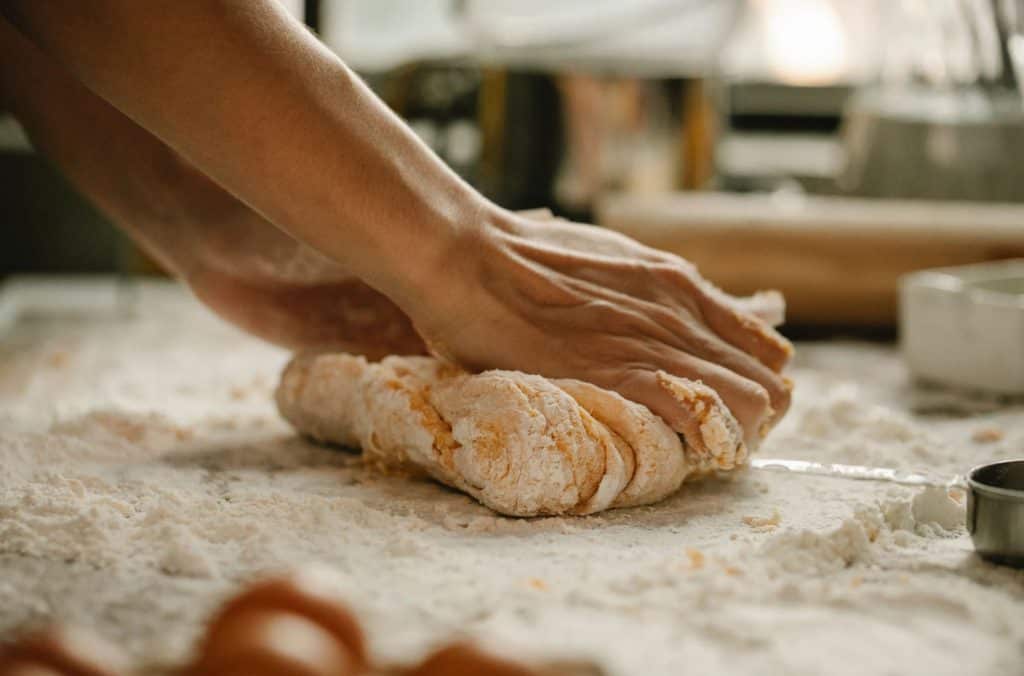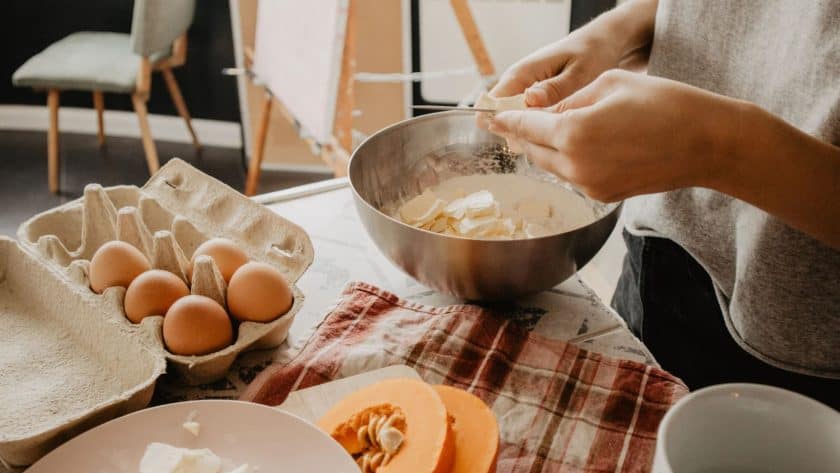Baking fills your home with pleasing aromas and provides you a lot of delight. There’s something soothing about the process of mixing ingredients, waiting for the oven timer to go off, and finally enjoying your own delight. However, a lot of baked goods contain a lot of sugar, butter, and white flour. Although they are delicious, these items aren’t necessarily the healthiest.
The good news? Making healthier eating choices doesn’t require you to give up baking. You may make healthier versions of your favorite meals by following these 10 awesome cooking tips. Whether you’ve been baking for years or are just starting off, these tips are simple to follow and ideal. So let’s get started!
1. Use Whole Wheat Flour Instead of White Flour
The use of white flour is common in baking recipes. Although it’s highly processed and doesn’t provide your body with much fiber or nourishment, it’s okay in moderation. Whole wheat flour is a better choice because it has more fiber, vitamins, and minerals.
To start, consider using whole wheat flour in place of half of the white flour in your recipe. This adds more nutrients to your baked goods while maintaining a delicate texture. It’s excellent in pancakes, muffins, banana bread, and even cookies.
Tip: For a softer texture, use whole wheat pastry flour. It works well for cakes and cupcakes.
2. Use Less Sugar
The majority of baking recipes use more sugar than is necessary. Usually, a 25–30% reduction in sugar doesn’t significantly alter the flavor. It’s an easy method to reduce empty calories.
Another suggestion is to use fruit in place of some of the sugar. Dates, applesauce, and mashed bananas are naturally sweet and high in fiber and vitamins. Additionally, they keep your baked goods moist.
To add sweetness to muffins or scones without using a lot of additional sugar, try including chopped dried fruits like apricots, cranberries, or raisins.
3. Try Healthier Fats
Although butter gives baked goods taste and texture, it contains a lot of saturated fat. Fortunately, there are fat substitutes that are healthy without losing the flavor of favorite delights. Consider replacing some or all of the butter with:
- Greek yoghurt
- Unsweetened applesauce.
- Avocado mashed
- Bananas mashed
- Canola or olive oil
These substitutes provide hydration and nutrients in addition to lowering bad fats. For example, Greek yoghurt gives protein and a pleasant tang, while applesauce makes baked items smooth and fluffy.
If you’re hesitant to make significant changes to a recipe, start slowly. To test the results, swap half of the butter the first time.
4. Add Vegetables
Although it may seem strange, using vegetables in baked products is a clever and delicious idea. They give your food minerals, moisture, and fiber without having it taste like a salad. Here are a few creative ways to use vegetables:
- Add boiled and pureed beetroot to chocolate cake or cupcakes
- Grate zucchini into muffins or chocolate cake
- Combine mashed pumpkin or sweet potato into pancakes or brownies.
These veggies provide color and nutrients to your treats while blending beautifully into the batter. Additionally, even choosy eaters won’t notice the vegetables you’re sneaking in.
5. Use Dark Chocolate Instead of Milk Chocolate
When using chocolate in your recipe, try to choose dark chocolate that has at least 70% cocoa. It has more antioxidants and less sugar. A small amount goes a long way because dark chocolate has a richer flavor.
Consider breaking up a few squares of dark chocolate rather than using the entire bag of chocolate chips. This allows you to enjoy rich chocolate bits without consuming excessive amounts of sugar.
For an even healthier alternative, you can use raw cacao powder instead of normal cocoa powder.

6. Make Smaller Portions
Healthy baking can be more about how much you eat than what’s in it. Try baking smaller amounts rather than larger ones. For example:
- Slice brownies into small pieces.
- Slice the cake into thinner pieces
- Use a mini muffin tray rather than a standard one.
By doing this, you can still enjoy sweets without going crazy. Half of what you make can also be frozen for later use. You won’t be tempted to overeat in this way.
7. Use Natural Sweeteners
White sugar can be substituted with a variety of natural sweeteners. These choices frequently offer a few more nutrients and more flavor:
- Honey
- Maple syrup
- Date paste or syrup
- Mashed ripe apples or bananas
Just keep in mind that liquid sweeteners can alter your batter’s texture. Consider slightly lowering the other liquids, such as milk or water, if the recipe requires sugar and you use syrup instead.
Additionally, use these sweeteners carefully. You can’t use them as much as you like just because they’re natural.
8. Add Nuts and Seeds
You can add nuts and seeds to baked items to make them more nourishing and satisfying. They are rich in minerals, fiber, protein, and good fats. They can be used in a variety of recipes:
- Sprinkle chia or flaxseeds over banana bread before baking
- Add chopped walnuts or almonds into muffin batter
- Include sunflower seeds into granola bars or pastries
Nuts and seeds not only offer health advantages but also a pleasant crunch and taste.
9. Use Greek Yogurt
One of the most practical and healthful baking substitutes is Greek yoghurt. Heavy cream, sour cream, or even some of the butter or oil might be substituted with it. It adds protein and gives your baking a rich, creamy texture.
Try making muffins, cakes, cheesecakes, and pancakes with Greek yoghurt.
It can also be used to produce healthy dips or frostings. For a tasty and healthier alternative to sugary icing, combine it with a little honey and vanilla to create a creamy topping.
10. Try New Things and Have Fun
Baking is about learning and having fun while doing it. Try a variety of ingredients and find what suits you best. Not every substitute will be flawless the first time, and that’s fine.
Begin with little steps. Make a single change to a recipe and taste it. If it’s good, hold onto it. Try something else the next time if not. You and your family will eventually develop a selection of healthier meals that you enjoy.
Additionally, keep in mind that baking doesn’t have to be low-fat or sugar-free to be considered healthy. It’s not about being perfect, but about making better decisions most of the time.
Final Thoughts
Healthy baking is simpler than you think. You can create delicious treats that are healthier for your body with a few slight modifications. Every small step helps, whether it’s cutting back on sweets, replacing butter with yoghurt, or slipping in some vegetables.
You don’t have to stop enjoying baking. You and your family can instead enjoy it in a more beneficial way. So get your mixing bowl, prepare the oven, and give one or two of these tips a try today.
And keep in mind that if something goes wrong, it’s only an opportunity to learn. Keep baking, enjoy the process, and have fun!
